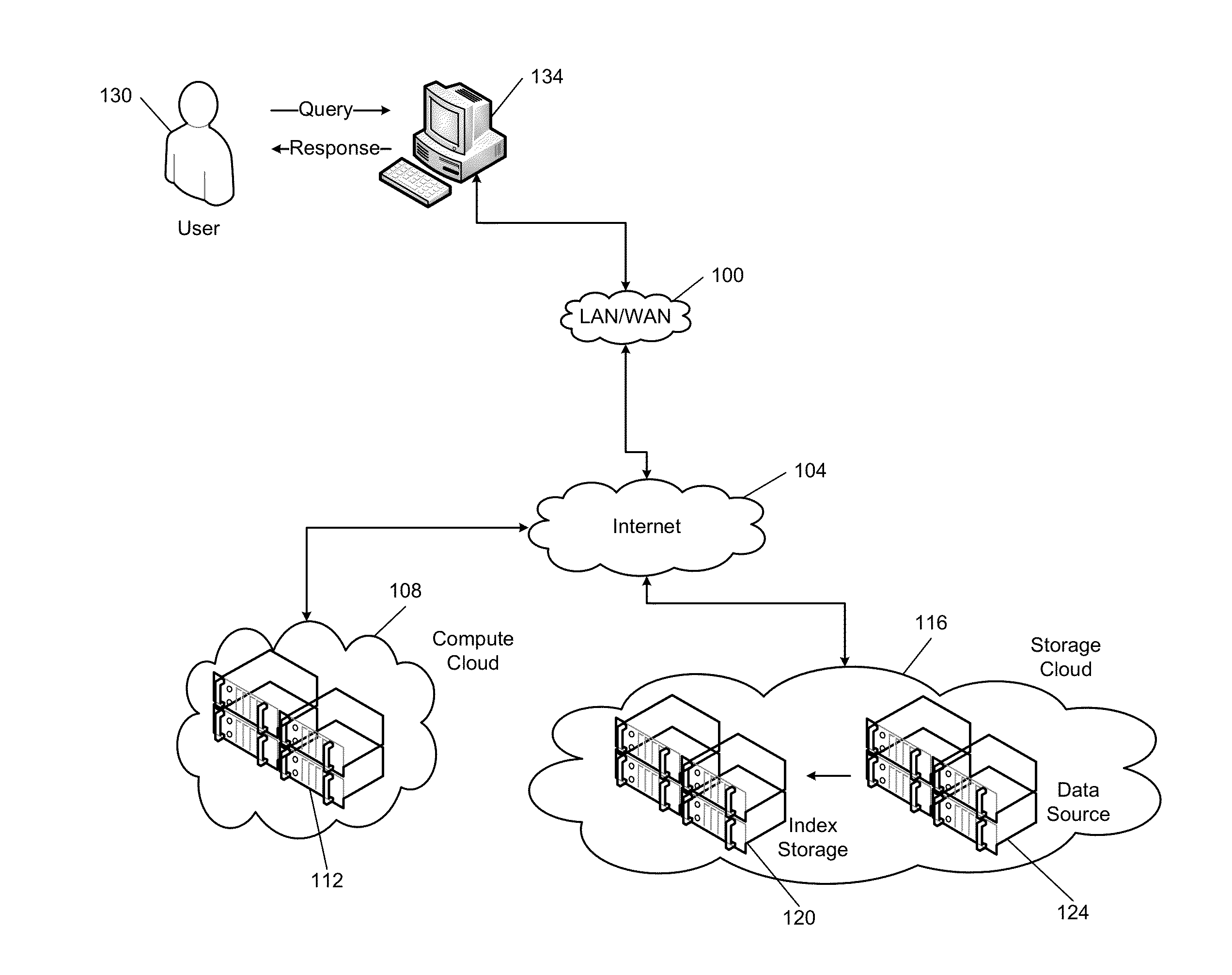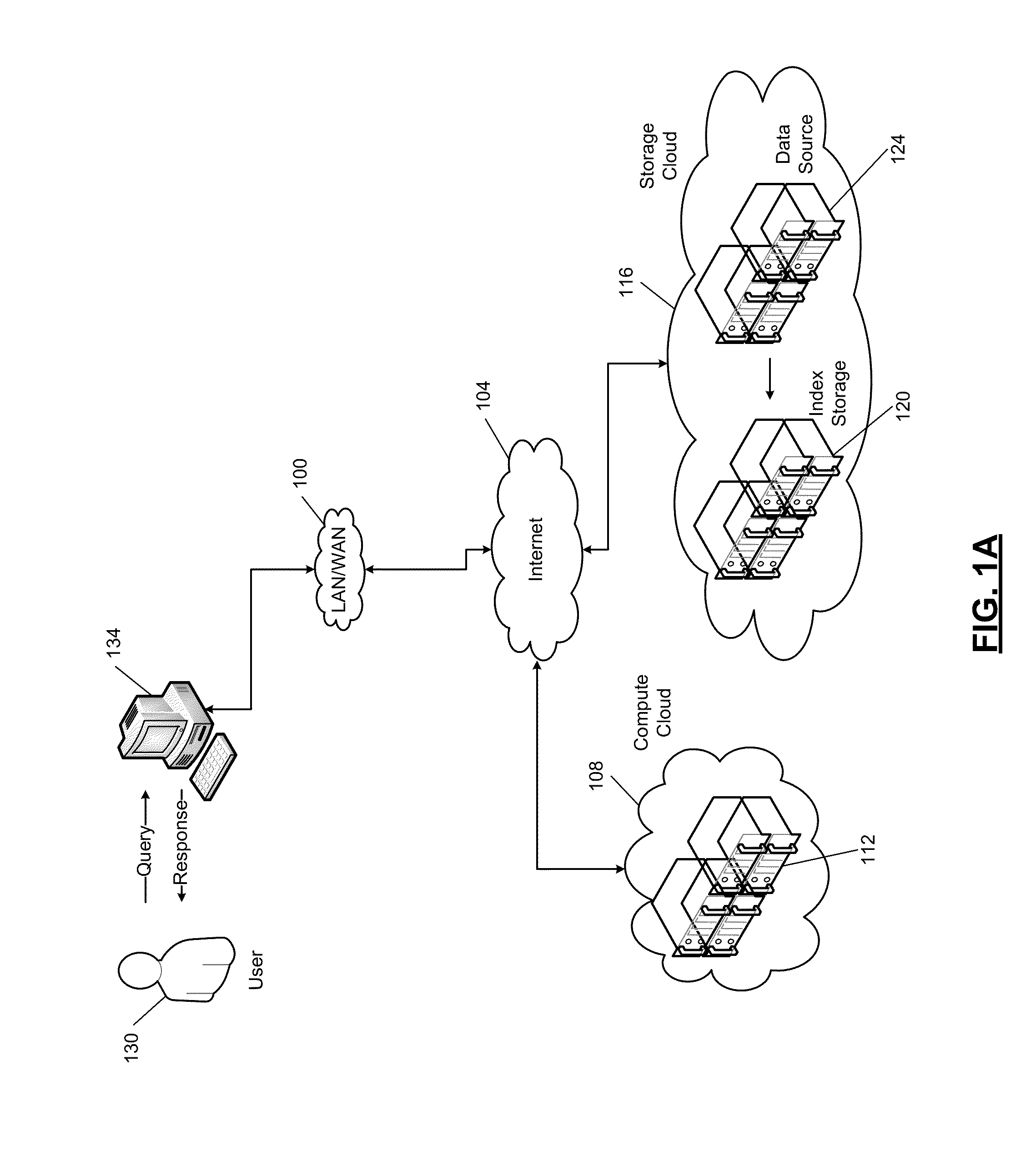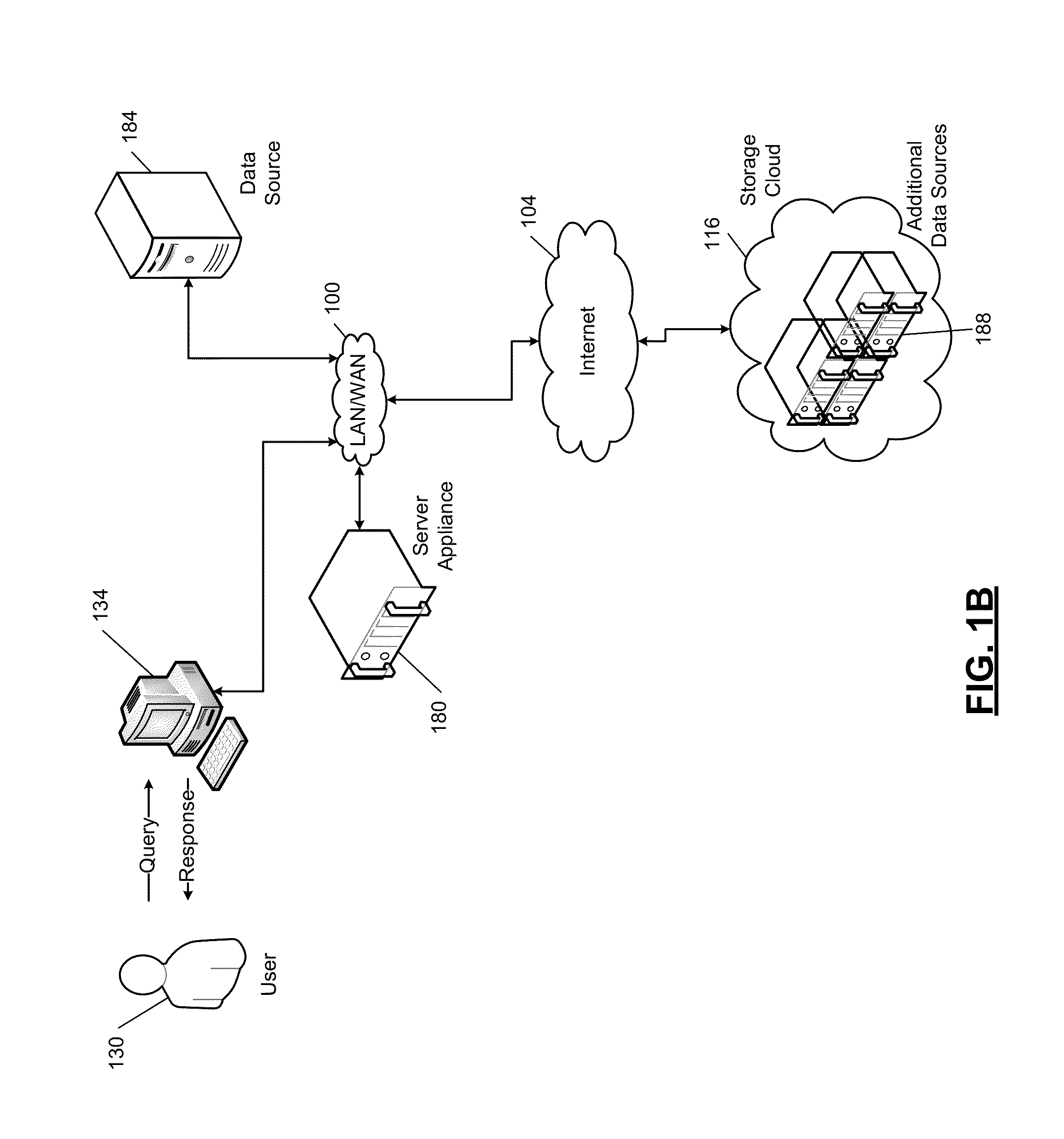Scalable Analysis Platform For Semi-Structured Data
a semi-structured data and analysis platform technology, applied in relational databases, multi-dimensional databases, instruments, etc., can solve the problems of difficult or impossible implementation of changes, increase in complexity of etl process, and take professionals weeks to months, and achieve easy access to the cloud, low cost, and catch-on effect fairly quickly
- Summary
- Abstract
- Description
- Claims
- Application Information
AI Technical Summary
Benefits of technology
Problems solved by technology
Method used
Image
Examples
cumulative example
[0100]With the above simple rules, it is possible to type deeply nested JSON records. For instance, consider a complex hypothetical record that represents page view statistics for a web page:
{ “stat”: [ 10, “total_pageviews”, { “counts”: [1, [3]], “page_attr”: 7.0 }, { “page_attr”: [“internal”]} ]}
The following schema would be produced:
{ “stat”: [number,string,{ “counts”: [number, [number]],“page_attr”: number,“page_attr”: [string]}]}
[0101]In various implementations, the JSON Schema format can be used to encode the inferred schema. This format is standardized, and can easily be extended to incorporate additional metadata (e.g., whether an object is a map). However, it is quite verbose and space-inefficient, so it is not used for the examples in this disclosure. For instance, in JSON-Schema format, the above schema is represented as follows:
{“type”: “object”,“properties”: {“stat”: {“items”: {“type”: [“number”,“string”,{“type”: “object”,“properties”: {“counts”: {“items”: {“type”: [“n...
example
[0168]An example for the BI, AI, MI, and VI. Consider tweets similar to the above, where a “retweet_freq” attribute is added, which keeps track of how many times a tweet was retweeted in a day:
1:{ “text”: “Love #muffins and #cupcakes: bit.ly / 955Ffo”,“user”: { “id”: 29471497, “screen_name”: “mashah08” },“tags”: [ “muffins”, “cupcakes”],“retweet_freq”: { “2012-12-01”: 10, “2012-12-02”: 13,“2012-12-03”: 1 } }2:{ “text”: “Love #sushi and #umami: bit.ly / 955Ffo”,“user”: { “id”: 28492838, “screen_name”: “binkert” },“tags”: [ “sushi”, “umami”],“retweet_freq”: { “2012-12-04”: 20, “2012-12-05”: 1 } }
[0169]The schema for these records is:
O{“text”: string, “user”: O{ “id”: number,“screen_name”: string }, “tags”: [ string ],“retweet_freq”: M{ “2012-12-01”: number ... “2012-12-05”: number } }
[0170]The JSON-Schema for these records will be
{ “type”: “object”, “obj_type”: “object”, “properties”: { “text”: { “type”: “string” }, “user”: { “type”: “object”, “obj_type”: “object”, “properties”: { “...
example query
[0215]To show example execution, consider the simple query:
select count(*) from table as t where t.a>10;
First, the proxy receives the query and issues it to an executor node for planning. Next, an executor node creates a query plan calling the metadata service to determine which collections and storage nodes are available for use. The executor node typically distributes the plan to other executor nodes, but here, we only need a single executor node.
[0216]Execution node then makes RPC calls to storage service nodes, pushing down t.a>10 predicate and count function. Next, storage nodes compute sub-counts and return them to executor node. Executor node then returns result to the proxy when proxy fetches the next result value.
Dynamic Typing
[0217]The storage engines of database systems (e.g., PostgreSQL) are strongly typed, which means that all the values of a column (or attribute) must have the exact same type (e.g., integer, string, timestamp, etc.). In the context of big-data analytic...
PUM
 Login to View More
Login to View More Abstract
Description
Claims
Application Information
 Login to View More
Login to View More - R&D
- Intellectual Property
- Life Sciences
- Materials
- Tech Scout
- Unparalleled Data Quality
- Higher Quality Content
- 60% Fewer Hallucinations
Browse by: Latest US Patents, China's latest patents, Technical Efficacy Thesaurus, Application Domain, Technology Topic, Popular Technical Reports.
© 2025 PatSnap. All rights reserved.Legal|Privacy policy|Modern Slavery Act Transparency Statement|Sitemap|About US| Contact US: help@patsnap.com



